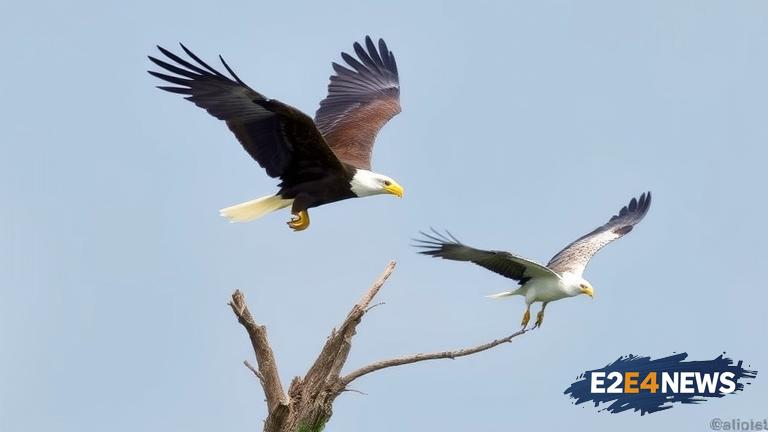The Chesapeake Bay, a vital estuary on the East Coast of the United States, has witnessed a remarkable recovery of bald eagles in recent years. Once on the brink of extinction, conservation efforts have paid off, and the bald eagle population has begun to thrive. However, this resurgence has raised red flags for another iconic bird species, the osprey. Experts warn that the increasing bald eagle population may lead to competition for resources, potentially threatening the osprey population. The osprey, a fish-eating bird of prey, has also made a significant recovery in the Chesapeake Bay, but its numbers are still fragile. The bald eagle, a formidable hunter, may compete with osprey for food, nesting sites, and other essential resources. This competition could have far-reaching consequences for the osprey population, which has only recently begun to rebound. Furthermore, the bald eagle’s presence may also lead to the displacement of osprey from their traditional nesting sites. As the bald eagle population continues to grow, it is essential to monitor the impact on osprey and other species in the ecosystem. Conservation efforts must be adapted to address the potential consequences of the bald eagle’s recovery. The Chesapeake Bay is a complex ecosystem, and the interactions between species are multifaceted. While the recovery of the bald eagle is a success story, it is crucial to consider the potential effects on other species. The osprey, in particular, requires careful attention, as its population is still vulnerable. Researchers are working to understand the dynamics of the bald eagle-osprey interaction, including the impact of competition for resources. Studies have shown that bald eagles are opportunistic hunters, capable of exploiting a wide range of prey. In contrast, osprey are specialized fish-eaters, relying on a specific set of resources. The overlap in their diets and habitats may lead to conflicts between the two species. To mitigate these conflicts, conservationists are exploring strategies to reduce competition for resources. This may involve the creation of artificial nesting sites for osprey or the implementation of measures to reduce the availability of food for bald eagles. Additionally, researchers are investigating the potential for bald eagles to prey on osprey, which could have significant implications for osprey populations. The recovery of the bald eagle is a testament to the effectiveness of conservation efforts, but it also highlights the need for ongoing monitoring and adaptation. As the ecosystem continues to evolve, it is essential to consider the potential consequences of species interactions and to develop strategies to mitigate any negative impacts. The Chesapeake Bay is a unique and vital ecosystem, and the conservation of its species requires a nuanced and multifaceted approach. By understanding the complex interactions between species, researchers and conservationists can work to protect the osprey and other vulnerable species, while also celebrating the success of the bald eagle’s recovery.
